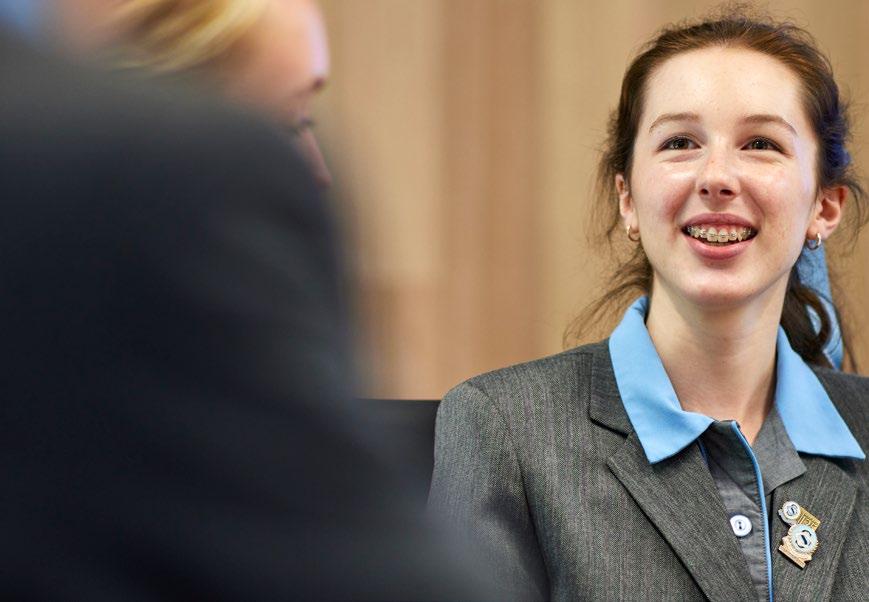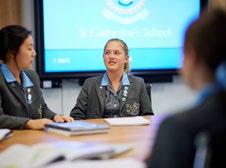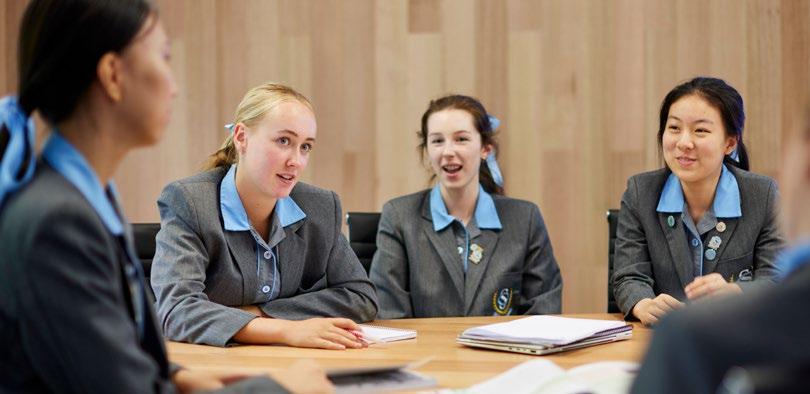
2 minute read
Harkness Rooms
Critical Approach
Shapes Confident Learners
Returning to school in 2022, Year 9 students commenced their Humanities classes being asked to lead discussions themselves. This was their immediate introduction to St Catherine’s new Year 9 Critical Conversations Program. The excitement amongst the students was clear from the very first class.
The idea to develop the Program grew from a visit our Principal, Michelle Carroll, made to Eton College in the UK in 2019, where the use of the Harkness-inspired model of teaching was observed in many classrooms. A Harkness approach is an alternative methodology of teaching and learning in which students lead critical conversations. The central purpose of the approach is to develop student capacity to use questioning and dialogue to direct their own learning. Students observe the learning process in order to develop academic confidence and resilience as life-long learners and to appreciate the value of having every voice being heard. Within St Catherine’s, our Harknessinspired approach not only changes the classroom patterns of teaching and learning, but the architecture and design of the rooms. Class sizes have been reduced to 12, increasing the capacity of students to be confident in their contributions, and active and supportive listeners during discussions. These changes are already taking shape in two specialised spaces that centre on the large oval shaped ‘Harkness’ table, rather than usual student desks.
Harkness-inspired discussions revolve around students engaging in challenging aspects of Geography and History. Students read and prepare in advance of the discussions, including viewing videos, reading texts and interpreting graphics, maps and other data. Students then conduct the critical conversations and conversations are mapped to monitor the balance of contributions.

CRITICAL CONVERSATION DYNAMICS
Dynamics are mapped to monitor the balance of contributions during the conversation. Tracking data includes when questions are asked, further comments added, evidence used and collaboration shown. Some of the topics Year 9 students are discussing this semester include: • Can we stop biomes being destroyed? • Can our need for clothing be met without harm to people and the environment?
This Program cultivates our Thinking Agenda across Year 9, placing the onus for learning on our students to undertake independent research, apply critical thinking, work collaboratively, and be confident in rigorous discussion. We are excited to follow the progress of our students as they take these Harkness skills into the senior years of school. Finally, a note on naming the Program. We are working with Indigenous Elders to respectfully use an appropriate Indigenous word that means to ‘learn by listening and understanding others.’ One word from Central Australian Aboriginal languages is Kulila. We hope to have approval for this word, or one similar to capture the central idea of our new model, and to further our School’s commitment to the Reconciliation process.
Mr Paul Gilby Head of Humanities









